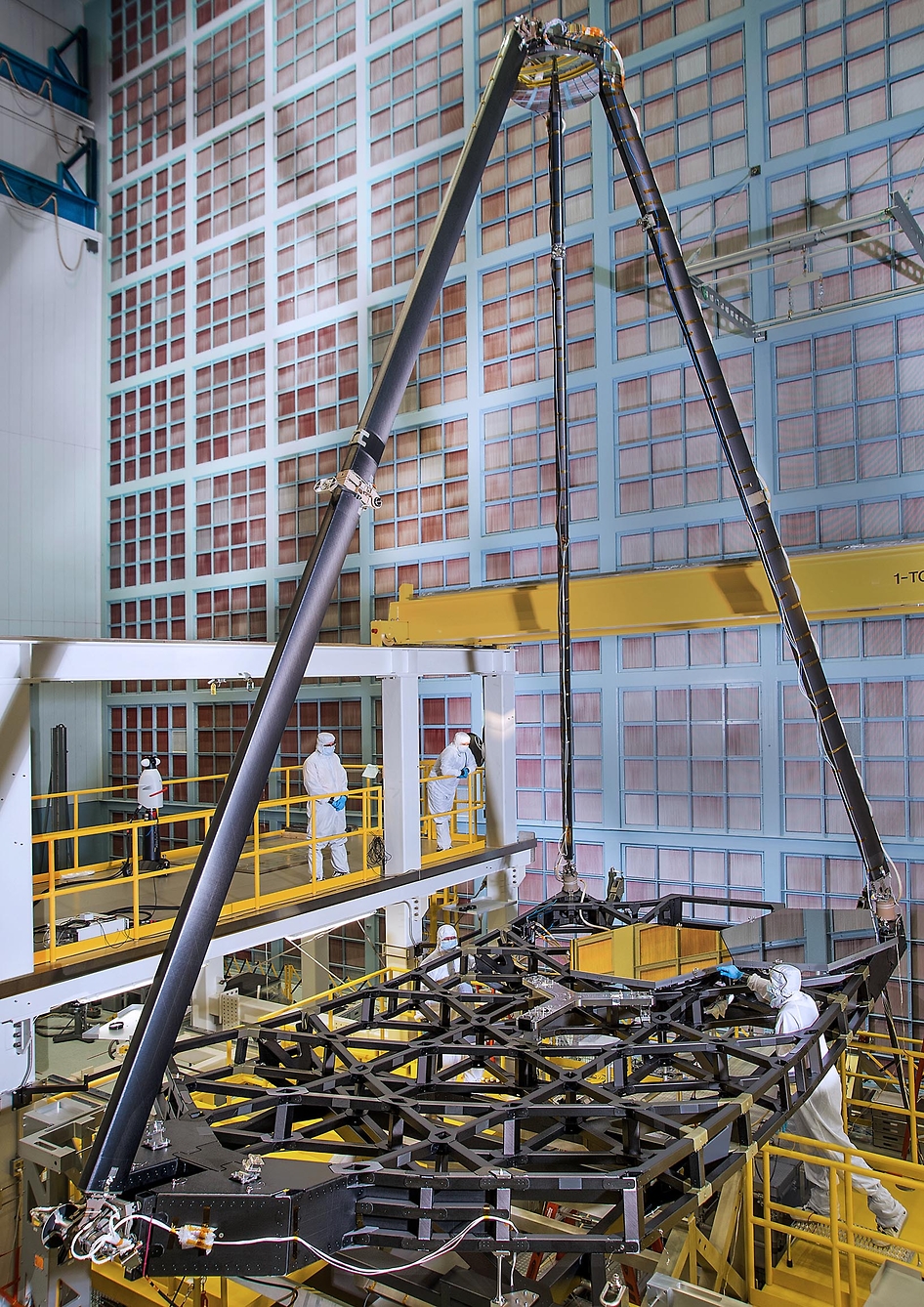
NASA GODDARD SPACE FLIGHT CENTER, MD — The mammoth mirror tripod assembly that is a key structural element of NASA’s James Webb Space Telescope (JWST) is undergoing critical action-packed testing at NASA’s Goddard Space Flight Center in Greenbelt, Md., and AmericaSpace was onsite recently for a first-hand look to observe some of the work in progress.
JWST is NASA’s top-priority science mission launching in this decade and is the most powerful telescope ever built.
It will have the capability to “look back toward the very first objects that formed after the Big Bang,” said Dr. John Mather, NASA’s Nobel Prize Winning scientist, in a prior exclusive interview with AmericaSpace at NASA Goddard.
The telescope is currently in the midst of a multi-year testing and construction phase inside the world’s largest cleanroom at NASA Goddard.
The lengthy tripod will hold Webb’s secondary mirror firmly in place above the honeycomb-like backplane assembly that holds the telescope’s segmented primary mirror.
The round secondary mirror reflects light gathered by the primary mirror into the telescopes state-of-the-art science instruments.
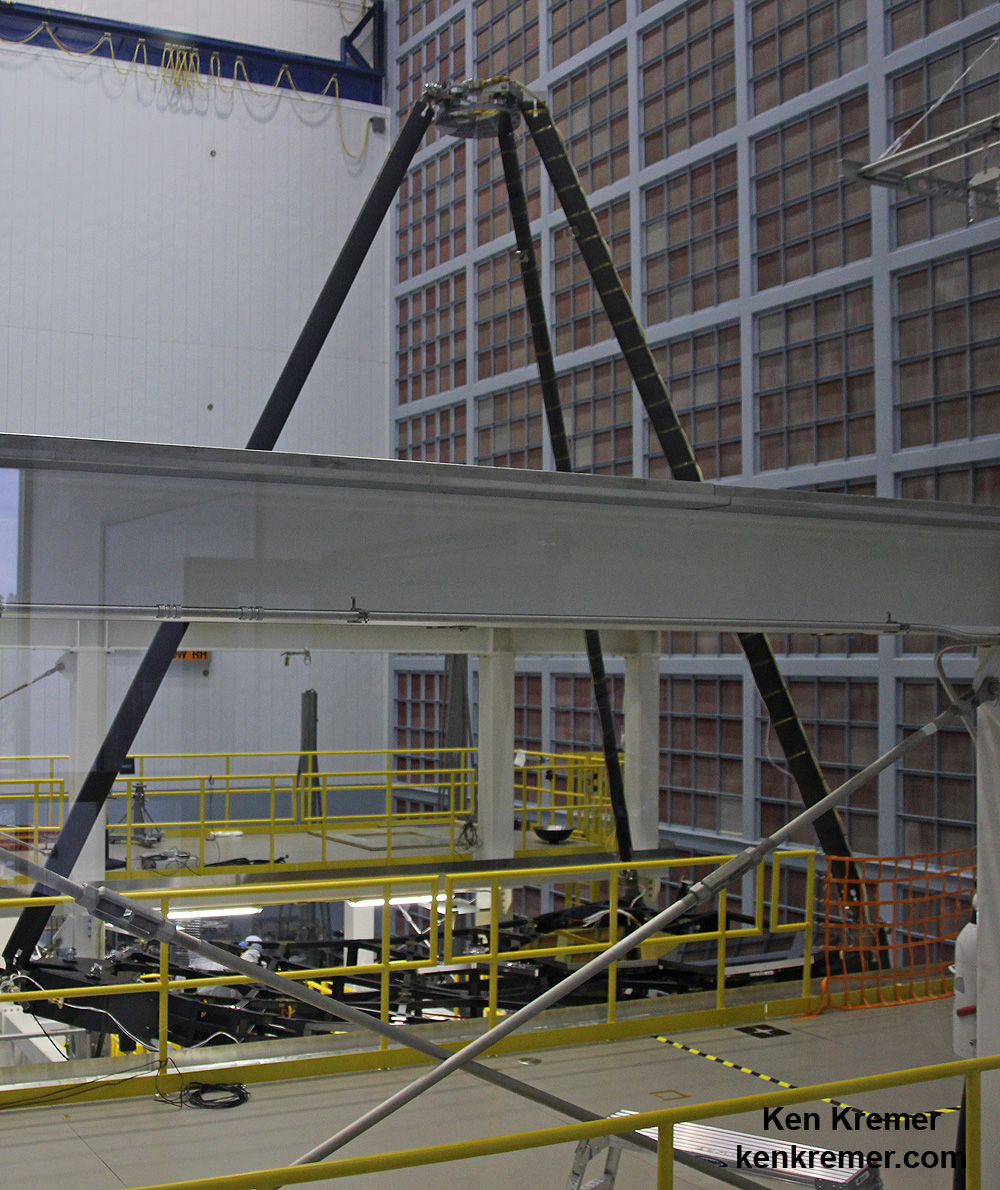
But like just about everything else involved with the unbelievably complicated Webb telescope, the legs comprising the tripod’s secondary mirror support structure will have to unfurl in space after the spacecraft is launched and deployed.
The huge telescope is now well on track to launch in October 2018 atop an ESA Ariane V ECA rocket from the Guiana Space Center in Kourou, French Guiana, following a series of delays and cost overruns earlier in the decade.
But before Webb is launched, all the hardware is being thoroughly tested to assure it meets specifications and will work as planned when in its orbit a million miles (1.5 million Km) from Earth at a position called L2—the second Sun-Earth Lagrange point.
Webb must deploy and function as planned because it can’t be fixed by astronaut crews.
“JWST is not designed to be serviced,” Mather stated. “Our job is to make sure it works. We have two of everything. So it’s Practice, Practice, Practice.”
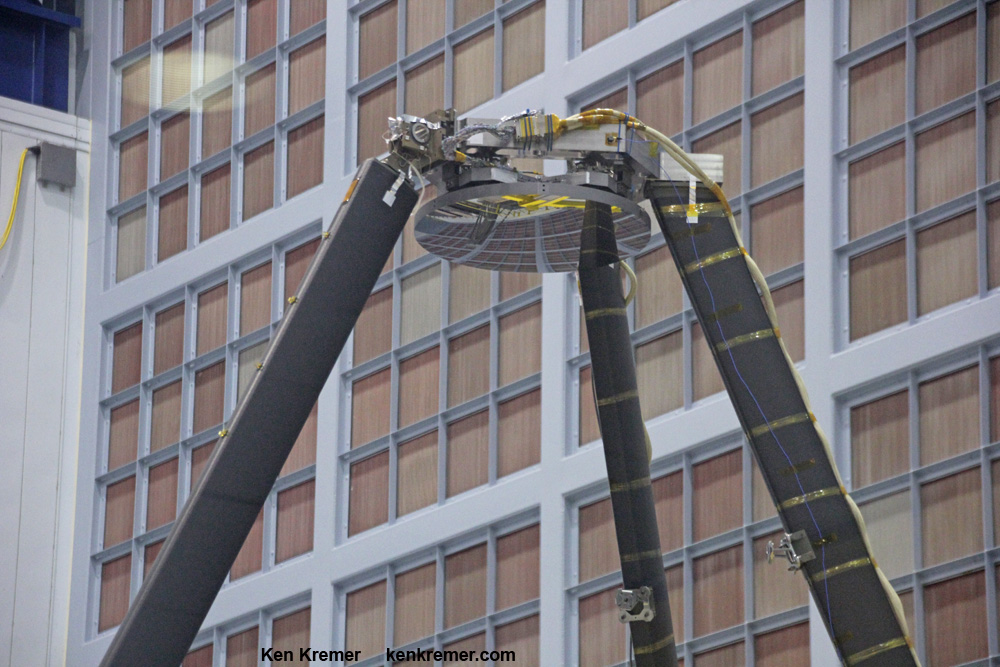
To get ready for the tripod unfurling test, Goddard technicians first assembled and tested an engineering version of the hardware to test procedures and gain experience before working with the actual flight units.
During a recent visit to Goddard, this writer observed as technicians were intricately carrying out the delicate installation of primary mirror flight spares onto the primary mirror backplane engineering unit to carry out a more realistic test.
The secondary mirror support tripod extends to about 8 meters (26.2 feet) long once it is fully deployed.
Goddard engineers recently completed a successful test run deployment of the tripod in Goddard’s giant clean room using Webb’s “Pathfinder” backplane, or test “backbone” structural hardware first.
Watch this video to see the unfurling test:
Video caption: JWST Secondary Mirror Deploy Timelapse. Setting up NASA’s James Webb Space Telescope’s secondary mirror in space will require special arms that resemble a tripod that was recently demonstrated in a NASA cleanroom. Credit: NASA, Mike McClare
“This is the first time we have performed a deployment with a mirror on it and is an important next step in proving the system will work in space as planned,” said Lee Feinberg NASA’s Optical Telescope Element manager at the agency’s Goddard Space Flight Center in Greenbelt, Md.
Once in space, Webb’s solar array will be deployed immediately, followed by the high-gain antenna two hours later. Thrusters will fire to start the journey to place it into orbit around the Sun at L2.
During the journey to L2, the mirrors, sunshield, and everything else about JWST will then be unfolded in a carefully choreographed and highly complex sequence lasting about six months. The four science instruments will also be calibrated.
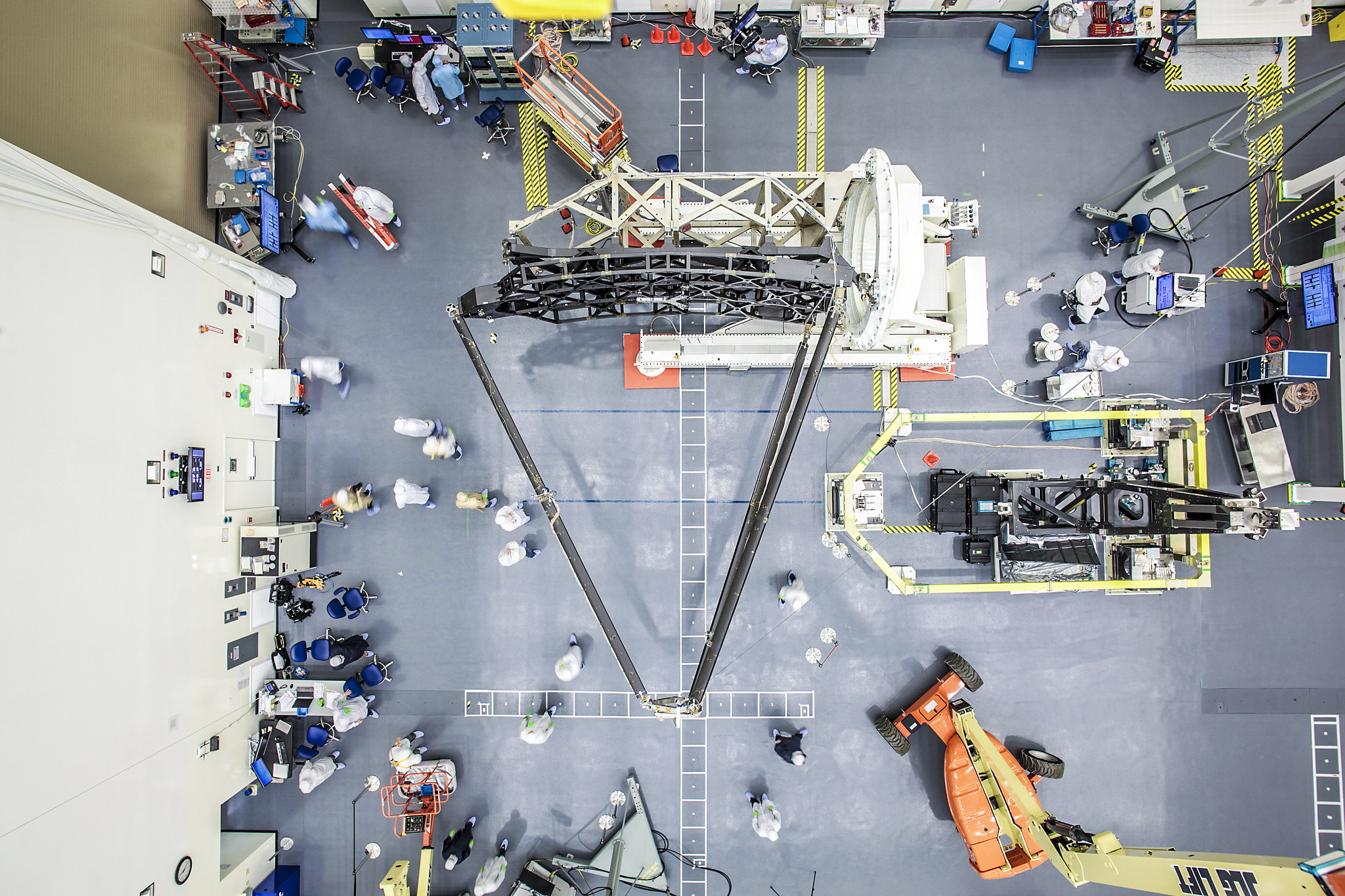
Engineers did a test run using the Webb’s “Pathfinder” backplane, or test “backbone” structure, to ensure that one of the secondary mirrors would set up properly in its orbit a million miles from Earth.
“The deployment of the tripod that holds the secondary mirror has a tipping point, and this is controlled by the yellow gravity off-loading device,” said Ray Lundquist, the Webb telescope ISIM Lead Systems Engineer at NASA’s Goddard Space Flight Center in Greenbelt, Md.
The tripod consists of three supports and hinges that fold out from the telescope’s backplane. The tripod was constructed from composite tubes built by ATK. The hinges were built by Northrop Grumman.
Both the round secondary and hexagonal-shaped primary mirrors are made of beryllium, which was selected for its stiffness, light weight, and stability at cryogenic temperatures.
Webb is outfitted with a segmented 6.5 meter (21 ft 4 in) diameter aperture primary mirror. It’s the largest mirror ever placed in space and weighs 705 kg.
The primary mirror is comprised of 18 individual hexagonal segments and configured into a nearly circular arrangement.
Each of the primary mirrors are gold coated. They measure 1.3 meters (4.3 feet) in diameter and weigh about 20 kg (46 pounds).
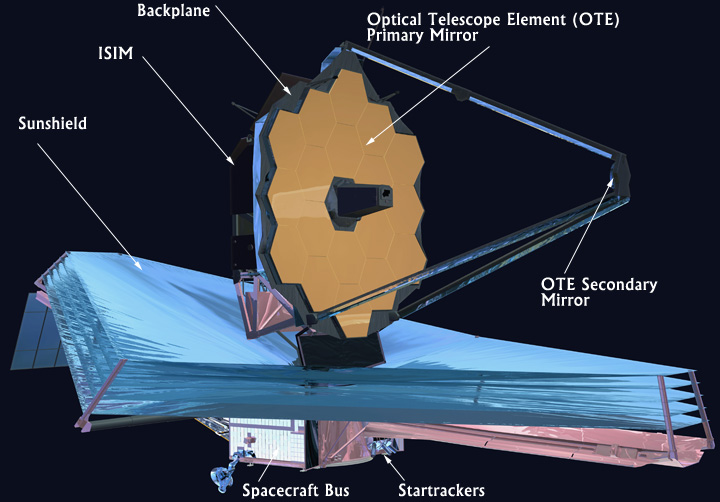
NASA has overall responsibility for JWST, which is a joint international collaborative project between NASA, ESA (European Space Agency), and CSA (Canadian Space Agency) comprising more than 17 countries.
NASA Goddard Space Flight Center provides overall management, systems engineering, and the ISIM science module. Northrop Grumman is the prime contractor.
Stay tuned here for continuing developments.
Want to keep up-to-date with all things space? Be sure to “Like” AmericaSpace on Facebook and follow us on Twitter: @AmericaSpace
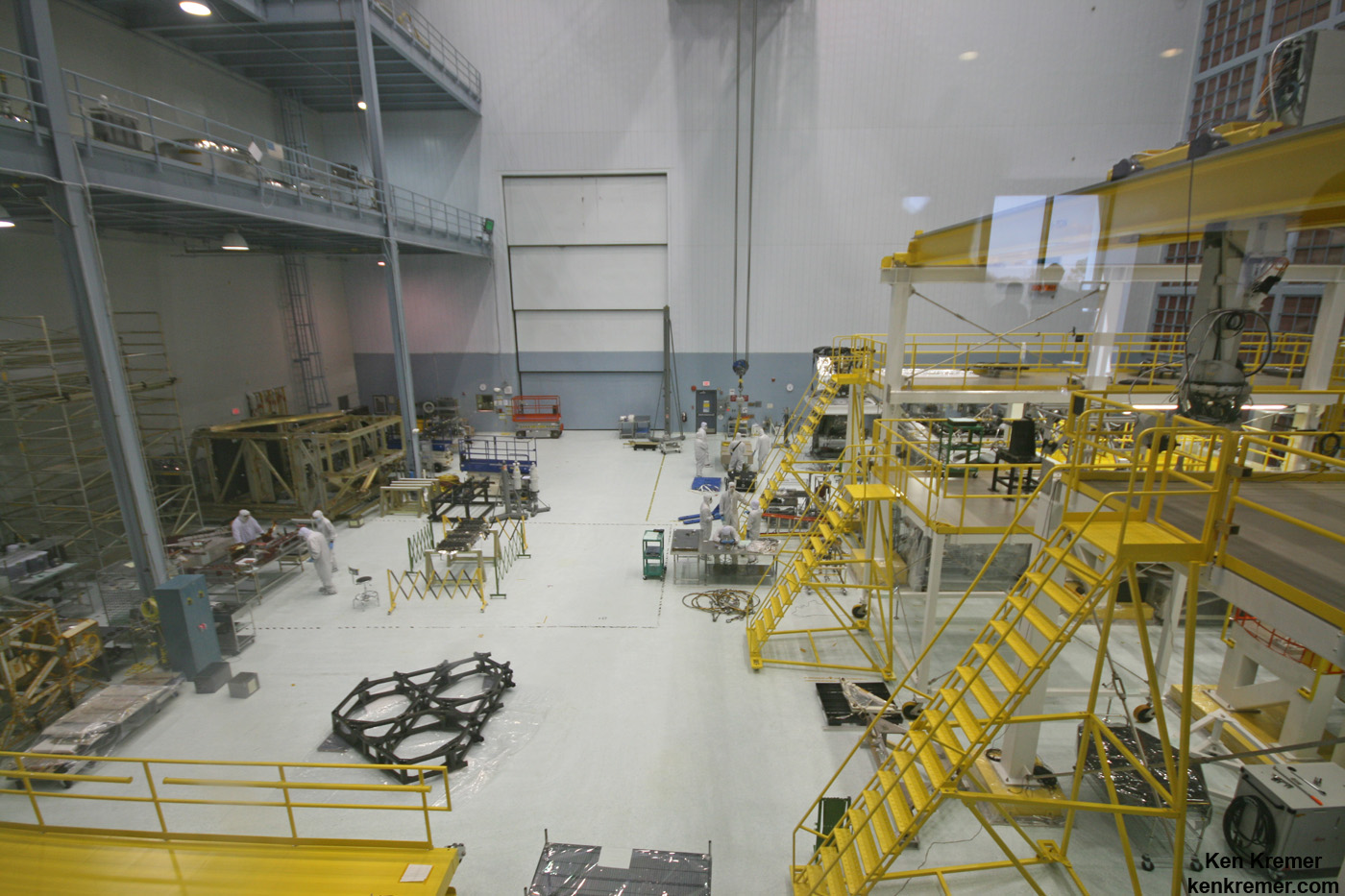
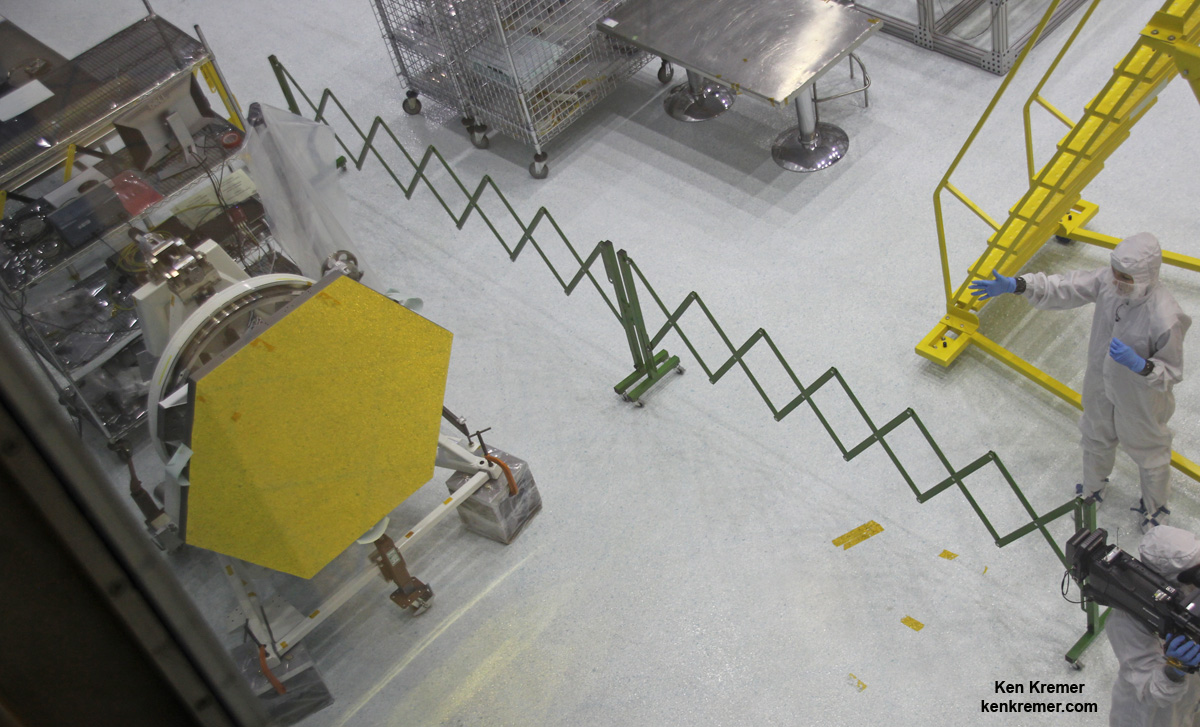




LET’S NOT SCIMP ON THE SYSTEM GROUND TESTS THIS TIME.